Three Phase Power Transformer: A Comprehensive Guide for Electrical Engineers?
Are you struggling to understand three-phase power transformers? You’re not alone. Many engineers find this topic challenging, but it’s crucial for modern power systems.
Three-phase power transformers are essential components in electrical power systems. They efficiently transfer electrical energy between circuits, stepping voltage up or down while maintaining a constant frequency. Understanding their principles is key for any electrical engineer.
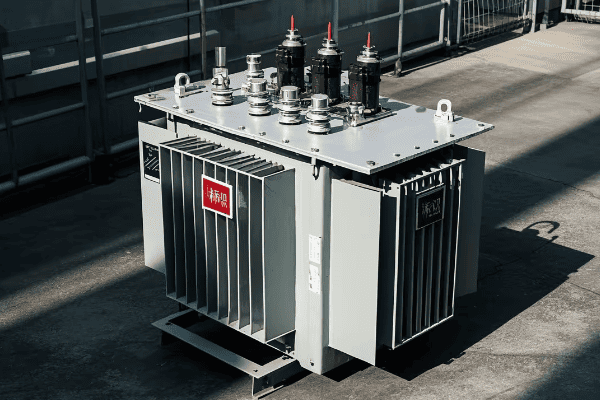
In this guide, I’ll break down the complexities of three-phase power transformers. We’ll explore their fundamental principles, design, installation, performance, and real-world applications. Let’s dive in and demystify this critical technology.
Fundamental Principles of Three Phase Power Transformers?
Have you ever wondered how three-phase power transformers work? It’s a question that puzzled me early in my career, but understanding these principles is crucial for any electrical engineer.
Three-phase power transformers operate on the principle of electromagnetic induction. They consist of three sets of primary and secondary windings, each corresponding to one phase of the three-phase system. This configuration allows for efficient power transfer and voltage transformation.
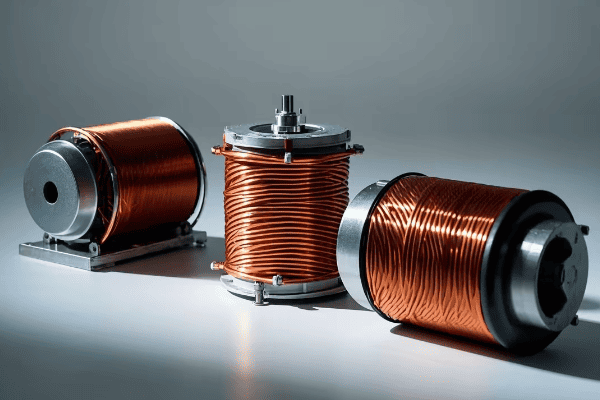
Let’s delve deeper into the fundamental principles of three-phase power transformers. This knowledge is essential for designing, operating, and maintaining these critical components of our power systems.
Core Concepts
-
Electromagnetic Induction
- Faraday’s Law: The basis of transformer operation
- Mutual inductance between primary and secondary windings
-
Three-Phase System
- 120-degree phase shift between phases
- Balanced load distribution
-
Transformer Ratios
- Turns ratio: Relationship between primary and secondary windings
- Voltage ratio: Step-up or step-down transformation
| Concept | Description | Importance |
|---|---|---|
| Electromagnetic Induction | The process by which a changing magnetic field induces a voltage in a conductor | Forms the basis of transformer operation |
| Three-Phase System | A power system with three alternating currents phase-shifted by 120 degrees | Allows for more efficient power transmission |
| Transformer Ratios | The relationship between primary and secondary windings and voltages | Determines the transformer’s voltage transformation capability |
Winding Configurations
Three-phase transformers can have different winding configurations, each with its own advantages:
- Delta-Delta (Δ-Δ)
- Wye-Wye (Y-Y)
- Delta-Wye (Δ-Y)
- Wye-Delta (Y-Δ)
Each configuration has specific applications and benefits. For example, Delta-Wye is often used for stepping up voltage in power distribution systems, while Wye-Delta is common in industrial applications for motor starting.
Magnetic Circuit
The magnetic circuit is a crucial aspect of three-phase transformer design:
-
Core Types
- Three-legged core
- Five-legged core
- Shell type
-
Core Materials
- Silicon steel
- Amorphous metals
The choice of core type and material significantly impacts the transformer’s efficiency and performance. For instance, amorphous metal cores can reduce no-load losses by up to 70% compared to traditional silicon steel cores.
Understanding these fundamental principles is essential for any electrical engineer working with power systems. They form the foundation for more advanced concepts in transformer design and operation.
Design and Construction of Three Phase Power Transformers?
Have you ever wondered what goes into designing and building a three-phase power transformer? It’s a complex process that requires careful consideration of numerous factors to ensure efficiency, reliability, and safety.
Designing and constructing three-phase power transformers involves careful selection of materials, precise winding techniques, and robust insulation systems. Key considerations include core design, winding arrangement, cooling methods, and protective features to ensure optimal performance and longevity.

Let’s explore the intricate process of designing and constructing three-phase power transformers. This knowledge is crucial for engineers involved in power system planning and equipment specification.
Core Design
The core is the heart of the transformer:
-
Material Selection
- Grain-oriented silicon steel: Most common
- Amorphous metal: Higher efficiency, but more expensive
-
Core Construction
- Stacked core: Easier to manufacture
- Wound core: Better performance, especially for smaller transformers
-
Core Shape
- Three-legged: Standard for three-phase transformers
- Five-legged: Better for unbalanced loads
| Core Type | Advantages | Disadvantages |
|---|---|---|
| Stacked Core | Easier to manufacture, lower cost | Higher core losses |
| Wound Core | Lower core losses, better performance | More complex manufacturing, higher cost |
| Three-legged | Compact design, suitable for most applications | Less effective for unbalanced loads |
| Five-legged | Better handling of unbalanced loads | Larger size, higher material cost |
Winding Design
Proper winding design is crucial for transformer performance:
-
Conductor Material
- Copper: Higher conductivity, but more expensive
- Aluminum: Lower cost, but larger size for same capacity
-
Winding Types
- Disc windings: Good for high-voltage applications
- Helical windings: Suitable for high-current, low-voltage applications
- Layer windings: Used in smaller transformers
-
Insulation
- Paper insulation: Traditional method
- Enamel coating: For smaller gauge wires
- Synthetic materials: For special applications
Cooling Systems
Effective cooling is essential for transformer longevity:
-
Oil-immersed Transformers
- ONAN (Oil Natural Air Natural)
- ONAF (Oil Natural Air Forced)
- OFAF (Oil Forced Air Forced)
-
Dry-type Transformers
- AN (Air Natural)
- AF (Air Forced)
The choice of cooling system depends on the transformer’s size, location, and operating conditions. For instance, ONAN cooling is suitable for smaller transformers in moderate climates, while OFAF is used for larger units in harsher environments.
Protective Features
Incorporating protective features is crucial for safe operation:
- Buchholz Relay: Detects gas accumulation in oil-filled transformers
- Pressure Relief Device: Prevents tank rupture due to internal pressure
- Temperature Monitors: Track winding and oil temperatures
- Tap Changers: Allow voltage adjustment under load
These protective features help prevent catastrophic failures and extend the transformer’s lifespan. For example, the Buchholz relay can detect early signs of internal faults, allowing for preventive maintenance before a major failure occurs.
Designing and constructing three-phase power transformers is a complex process that requires a deep understanding of electrical and mechanical principles. By carefully considering each aspect of the design, we can create transformers that are efficient, reliable, and safe for long-term operation in our power systems.
Installation and Maintenance Best Practices?
Are you unsure about the best ways to install and maintain three-phase power transformers? It’s a common concern, but proper installation and maintenance are crucial for ensuring long-term reliability and efficiency.
Installing and maintaining three-phase power transformers requires careful planning and regular attention. Key practices include proper site preparation, correct handling and installation procedures, regular inspections, and preventive maintenance routines. These steps ensure optimal performance and extend the transformer’s lifespan.
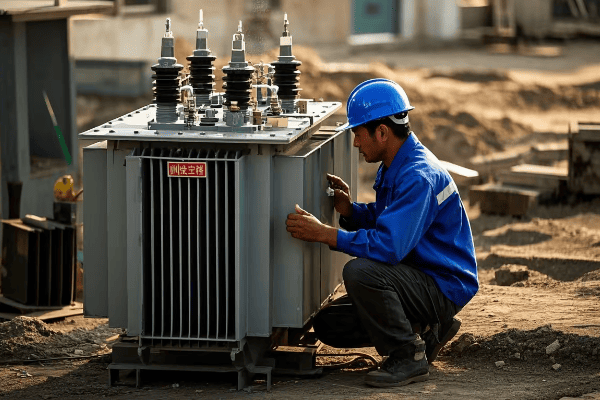
Let’s delve into the best practices for installing and maintaining three-phase power transformers. This knowledge is essential for engineers and technicians responsible for power system infrastructure.
Installation Best Practices
Proper installation is crucial for the transformer’s performance and longevity:
-
Site Preparation
- Ensure a level, stable foundation
- Provide adequate clearance for ventilation and maintenance
- Install proper oil containment systems for oil-filled transformers
-
Handling and Positioning
- Use appropriate lifting equipment
- Follow manufacturer’s guidelines for transportation and positioning
- Avoid shock and vibration during movement
-
Connections
- Ensure proper grounding
- Use appropriate cable sizes and terminations
- Verify correct phase sequence
-
Testing Before Commissioning
- Insulation resistance tests
- Turns ratio tests
- Oil tests (for oil-filled transformers)
| Installation Step | Key Considerations | Potential Issues if Neglected |
|---|---|---|
| Site Preparation | Level foundation, proper drainage | Uneven settling, water accumulation |
| Handling | Proper lifting equipment, avoid shocks | Internal damage, misalignment |
| Connections | Correct cable sizing, proper terminations | Overheating, poor performance |
| Pre-commissioning Tests | Insulation, ratio, and oil tests | Undetected faults, premature failure |
Maintenance Best Practices
Regular maintenance is essential for ensuring reliable operation:
-
Routine Inspections
- Visual checks for oil leaks, rust, or damage
- Monitoring of oil levels in conservators
- Checking for unusual noises or vibrations
-
Oil Maintenance (for oil-filled transformers)
- Regular oil sampling and testing
- Oil filtering or replacement as needed
- Monitoring of moisture content and acidity
-
Electrical Tests
- Periodic insulation resistance tests
- Power factor tests
- Winding resistance measurements
-
Thermal Monitoring
- Regular checks of operating temperatures
- Infrared scanning to detect hot spots
- Verification of cooling system operation
-
Protective Device Maintenance
- Testing of Buchholz relays
- Calibration of temperature monitors
- Inspection and testing of pressure relief devices
-
Tap Changer Maintenance
- Regular inspection and cleaning
- Lubrication of moving parts
- Contact resistance measurements
Implementing these maintenance practices can significantly extend the life of a transformer and prevent unexpected failures. For example, regular oil testing can detect early signs of insulation degradation, allowing for timely intervention before a major fault occurs.
Predictive Maintenance Techniques
Modern maintenance strategies often incorporate predictive techniques:
-
Dissolved Gas Analysis (DGA)
- Detects and identifies faults based on gases dissolved in transformer oil
- Allows for early detection of potential issues
-
Partial Discharge Monitoring
- Identifies insulation weaknesses before they lead to failure
- Can be performed online without interrupting service
-
Frequency Response Analysis (FRA)
- Detects mechanical deformations in windings
- Useful for assessing transformer condition after transportation or seismic events
These advanced techniques can provide valuable insights into the transformer’s condition, allowing for more targeted and efficient maintenance interventions.
Proper installation and maintenance of three-phase power transformers are critical for ensuring reliable and efficient operation of power systems. By following these best practices, we can maximize the lifespan of these vital components and minimize the risk of unexpected failures.
Performance Analysis and Efficiency Optimization?
Have you ever wondered how to assess and improve the performance of three-phase power transformers? It’s a critical question for engineers aiming to optimize power systems and reduce energy losses.
Performance analysis of three-phase power transformers involves evaluating key parameters such as efficiency, voltage regulation, and losses. Optimization strategies include improving core and winding designs, using advanced materials, and implementing better cooling systems to enhance overall efficiency and reliability.
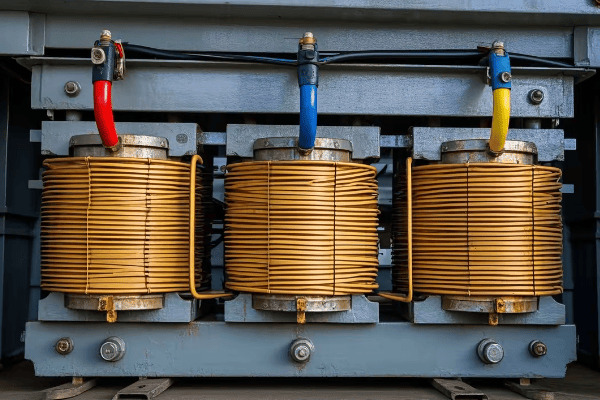
Let’s explore the methods for analyzing transformer performance and strategies for optimizing efficiency. This knowledge is crucial for engineers working on improving power system performance and reducing operational costs.
Performance Analysis Methods
Accurate performance analysis is the first step towards optimization:
-
Load Loss Test
- Measures copper losses in windings
- Conducted at rated current
-
No-Load Loss Test
- Measures core losses
- Conducted at rated voltage, no load
-
Temperature Rise Test
- Determines temperature rise under load
- Crucial for assessing cooling system effectiveness
-
Impedance Voltage Test
- Measures transformer impedance
- Important for short-circuit calculations
-
Efficiency Calculation
- Based on load and no-load losses
- Typically calculated at various load levels
| Test | Purpose | Key Parameters Measured |
|---|---|---|
| Load Loss | Determine winding losses | Copper losses, I²R losses |
| No-Load Loss | Measure core losses | Core losses, magnetizing current |
| Temperature Rise | Assess cooling effectiveness | Winding and oil temperature rise |
| Impedance Voltage | Determine transformer impedance | Leakage reactance, resistance |
Efficiency Optimization Strategies
Improving transformer efficiency involves several strategies:
-
Core Optimization
- Use of high-grade silicon steel or amorphous metals
- Optimized core geometry to reduce flux path length
- Laser scribing of laminations to reduce eddy currents
-
Winding Optimization
- Use of copper instead of aluminum for lower losses
- Optimized conductor shape and arrangement
- Transposition of conductors to reduce circulating currents
-
Insulation Improvements
- Use of high-temperature insulation materials
- Optimized insulation design to improve heat dissipation
-
Cooling System Enhancements
- Use of more efficient cooling methods (e.g., OFAF instead of ONAN)
- Improved radiator design for better heat dissipation
- Implementation of directed oil flow techniques
-
Load Management
- Optimal sizing of transformers for expected load profiles
- Use of parallel operation for better load distribution
-
Advanced Materials
- Nanocrystalline core materials for ultra-low losses
- High-temperature superconducting windings for near-zero resistance
Efficiency Standards and Regulations
Awareness of efficiency standards is crucial for optimization:
- IEC 60076-20: International standard for transformer efficiency
- DOE 10 CFR Part 431: U.S. Department of Energy efficiency standards
- EU Ecodesign Directive: European Union efficiency requirements
These standards set minimum efficiency levels for transformers, driving continuous improvement in design and manufacturing processes.
Advanced Performance Analysis Techniques
Modern analysis methods provide deeper insights:
-
Finite Element Analysis (FEA)
- Simulates electromagnetic and thermal behavior
- Helps optimize core and winding designs
-
Computational Fluid Dynamics (CFD)
- Models oil flow and heat transfer
- Aids in optimizing cooling system design
-
Dynamic Thermal Modeling
- Predicts transformer temperatures under varying load conditions
- Useful for determining safe loading limits
These advanced techniques allow for more accurate prediction of transformer performance and help identify areas for improvement before physical prototypes are built.
Economic Considerations
Efficiency optimization must be balanced with economic factors:
-
Total Cost of Ownership (TCO) Analysis
- Considers initial cost, energy losses, and maintenance over the transformer’s lifetime
- Helps justify investments in higher efficiency designs
-
Payback Period Calculation
- Determines how quickly efficiency improvements will pay for themselves
- Important for convincing stakeholders to invest in more efficient transformers
By carefully analyzing performance and implementing targeted optimization strategies, we can significantly improve the efficiency of three-phase power transformers. This not only reduces energy losses and operational costs but also contributes to a more sustainable power system.
Applications and Case Studies in Various Industries?
Have you ever wondered how three-phase power transformers are used in different industries? Understanding their applications can provide valuable insights into their importance and versatility in modern power systems.
Three-phase power transformers find applications across various industries, from power generation and transmission to industrial manufacturing and renewable energy. Case studies demonstrate their crucial role in ensuring reliable power supply, voltage transformation, and efficient energy distribution in diverse settings.
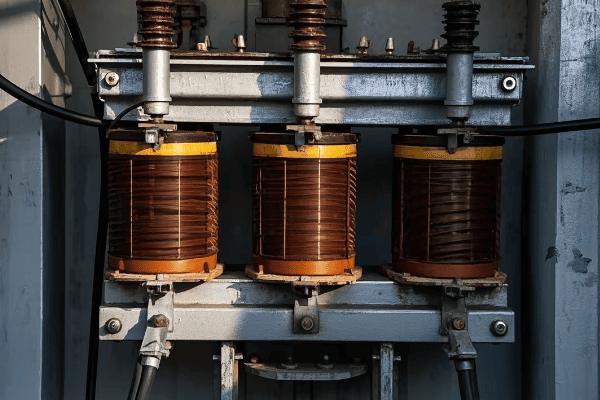
Let’s explore some real-world applications and case studies of three-phase power transformers across different industries. This knowledge is valuable for engineers working on diverse projects and for understanding the broader impact of transformer technology.
Power Generation and Transmission
Three-phase transformers play a critical role in power generation and transmission:
-
Step-Up Transformers at Power Plants
- Case Study: A 500 MVA generator step-up transformer at a coal-fired power plant
- Raises voltage from 22 kV to 400 kV for long-distance transmission
- Challenges: High voltage insulation, cooling under continuous full load
-
Substation Transformers
- Application: Step-down transformers in transmission substations
- Reduce voltage from transmission levels (e.g., 400 kV) to sub-transmission levels (e.g., 132 kV)
- Case Study: Implementation of a smart substation with digital monitoring in a major city
Industrial Manufacturing
Many industries rely heavily on three-phase power transformers:
-
Steel Industry
- Application: Large furnace transformers for electric arc furnaces
- Case Study: A 100 MVA furnace transformer for a steel mill in Germany
- Challenges: High current, harmonics, and frequent load fluctuations
-
Petrochemical Industry
- Application: Transformers for large motor drives in refineries
- Case Study: Installation of explosion-proof transformers in a Middle Eastern oil refinery
- Considerations: Safety in hazardous environments, corrosion resistance
| Industry | Application | Key Challenges |
|---|---|---|
| Power Generation | Step-up transformers | High voltage insulation, continuous full load |
| Substations | Step-down transformers | Reliability, smart grid integration |
| Steel Industry | Furnace transformers | High current, harmonics, load fluctuations |
| Petrochemical | Motor drive transformers | Safety in hazardous environments, corrosion |
Renewable Energy
The growth of renewable energy has created new applications for three-phase transformers:
-
Wind Farms
- Application: Step-up transformers for wind turbines
- Case Study: Offshore wind farm in the North Sea using 66 kV inter-array transformers
- Challenges: Compact design, reliability in harsh marine environments
-
Solar Power Plants
- Application: Inverter transformers for large-scale solar farms
- Case Study: 100 MW solar farm in the Mojave Desert using multiple 2.5 MVA transformers
- Considerations: Handling variable output, high ambient temperatures
Transportation
Three-phase transformers are crucial in electrified transportation systems:
-
Railway Electrification
- Application: Traction power substations
- Case Study: 25 kV AC railway electrification project in India
- Challenges: Frequent load changes, harmonics from AC-DC conversion
-
Electric Vehicle Charging Stations
- Application: Step-down transformers for fast-charging stations
- Case Study: Implementation of a 350 kW ultra-fast charging network across Europe
- Considerations: High power density, integration with smart grid systems
Data Centers
Modern data centers rely heavily on reliable power supply:
- Data Center Power Distribution
- Application: Medium voltage to low voltage transformation
- Case Study: 20 MVA transformer installation for a hyperscale data center in Singapore
- Challenges: High reliability requirements, energy efficiency, compact design
Lessons Learned from Case Studies
These case studies provide valuable insights:
-
Customization is Key
- Each application often requires tailored transformer designs
- Example: Special cooling systems for data center transformers to minimize footprint
-
Reliability is Paramount
- Unexpected transformer failures can have severe consequences
- Case Study: Implementation of advanced monitoring systems in critical infrastructure transformers
-
Efficiency Matters
- Even small improvements in efficiency can lead to significant energy savings
- Example: Upgrade of distribution transformers in a city grid, resulting in 0.5% efficiency gain and substantial annual energy savings
-
Environmental Considerations
- Increasing focus on eco-friendly designs and materials
- Case Study: Replacement of oil-filled transformers with dry-type units in an environmentally sensitive area
-
Smart Integration
- Growing trend of integrating transformers with smart grid technologies
- Example: Implementation of online monitoring and diagnostics in substation transformers for predictive maintenance
These diverse applications and case studies demonstrate the versatility and critical importance of three-phase power transformers across various industries. From powering heavy industrial processes to enabling the growth of renewable energy, these transformers play a vital role in our modern electrical infrastructure.
Understanding these real-world applications helps engineers appreciate the broader context of transformer design and operation. It also highlights the ongoing challenges and opportunities in the field, driving continuous innovation in transformer technology.
Conclusion
Three-phase power transformers are the backbone of our electrical systems. From power generation to industrial applications, they play a crucial role in ensuring efficient and reliable power distribution. Understanding their principles, design, maintenance, and applications is essential for any electrical engineer working in the power sector.
Free CHBEB Transformer Catalog Download
Get the full range of CHBEB transformers in one catalog.
Includes oil-immersed, dry-type, pad-mounted, and custom solutions.
Quick Message
Request A free quote
We'd like to work with you
- +86 15558785111
- [email protected]
- +86 15558785111
What We Do
CHINA BEI ER BIAN (CHBEB) GROUP, with 218 million in registered capital, originated from Beijing Beierbian Transformer Group. Headquartered in Beijing for R&D, it operates major production bases in Nanjing and Yueqing, producing high-quality products.
Latest Product
address
BeiJing
No 3,RongJing East Road,BeiJing Economic Technological Development Area,BeiJing,China
JiangSu
No 7️Xiangfeng Road,Jiangning,NanJing,JiangSu,China
WenZhou
No.211, Wei 16 Road, Industrial Zone, Yueqing, Wenzhou, Zhejiang, China.
XiangYang Industrial Zone ,YueQing,WenZhou,ZheJiang,China
contact us
- [email protected]
- +86 13057780111
- +86 13057780111
- +86 15558785111
Copyright © Bei Er Bian Group


